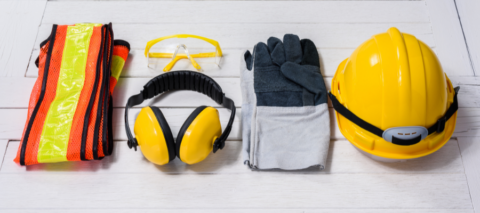Here at OHC, we aim to treat your injuries with the utmost care and personal attention. However, our greater goal is to help you prevent these injuries on the worksite.
Unfortunately, the harsh reality is that there are over 4,000 workplace fatalities and over three million recordable injuries per year in the United States. Safety leadership aims to create an environment where workers can focus on their tasks while avoiding harm and statistics like these, making safety a reality on the job.
How can you be an effective safety leader? Walking around with a clipboard and making inspections isn’t necessarily the best way to gain trust and increase desire to practice safety on the job. Instead, focus on fostering a unified environment and putting yourself straight into the work zone with your workers.
KEY COMPONENTS TO CREATING A SAFE ENVIRONMENT:
Take it Together
You and your workers make up one team on the worksite. As a safety leader, view your workers as valuable players on this team. When it comes to safety on the job, remember that you are on their level. They are real people, not just numbers or risks, with real lives and families. Get to know them personally, and your team’s dynamics and desire to increase safe practices will be sure to increase.
The Risk is Real
Team understanding of what the risks are and what the effects of these risks could be is one of the most important aspects of accident prevention. As a safety leader, you want to create a healthy paranoia on the worksite so that workers are continually aware of potential dangers and how to prevent them from occurring. Avoid complacency and avoid shrugging off risks.
Strategize for Success
The key to successful safety is to have a strategy. Safety leaders should prepare for the worst while expecting the best. Be realistic when planning how to handle potential problems and risks, and be descriptive in your plans. If the risks become reality, your detailed plans will keep things calm and organized during a crisis.
Serve, Not Swerve
An effective safety leader is not afraid to roll up their sleeves and lend a hand to their workers. In order to understand how real the risk of danger is, you’ll need to be hands-on and serve alongside the workers. This will also help you understand the dynamics of the team and the task. Remember that you are all part of a team and each player is crucial to getting the job done.
Practice What You Preach
Be a constant model of safety, whether this means wearing a hard hat or following all of the tedious but necessary steps. If you hold yourself accountable, your workers will hold themselves and each other accountable, too. As a leader, safety may start with you, but the overall goal is to get all of your coworkers to practice safety as well.
A safety leader shows, through his or her example, that everyone is in fact a leader when it comes to safety. Create a unified environment with genuine accountability among workers, and your safety will be of utmost importance. If you work to keep the risk just a risk, safety will be a reality.
MOBILE CLINIC
DIRECT: 251.436.8039
CELL: 251.751.9282
OFFICE: 251.434.6770
EMAIL: ddaniel@occupationalhc.com
PASCAGOULA CLINIC
OFFICE: (228) 762-4642 or (228) 762-4OHC
EMAIL: ddaniel@occupationalhc.com
Resources:






